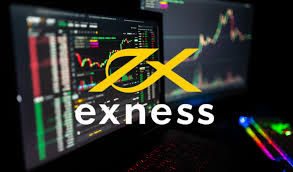
Effective Ways to Manage Your Exness Account
Managing an Exness account is crucial for anyone interested in trading forex or CFDs. With the right approach, traders can not only maximize their profits but also minimize their risks. In this article, we will explore various aspects of managing your Exness account, from the initial setup to ongoing trading strategies. If you’re new to the platform, you might find valuable information at Manage Exness Account http://hotspot.mg/exness-sign-up-join-your-path-to-exceptional-3/.
Setting Up Your Exness Account
Before you can start trading, you need to set up your Exness account correctly. Here’s how you can do it:
- Registration: Visit the Exness website and complete the registration process. Make sure to provide accurate information to avoid any complications later.
- Verification: After registering, you will need to verify your identity. This step is essential for account security and compliance with regulations.
- Account Type: Choose the type of account that suits your trading style. Exness offers various account types, including Standard, Pro, and Cent accounts. Each comes with different features and benefits.
- Funding Your Account: Deposit funds into your account using one of the many available payment methods. Exness supports various options, including credit/debit cards, e-wallets, and bank transfers.

Understanding the Trading Platform
Once your account is set up, familiarize yourself with the trading platform. Exness provides the MetaTrader 4 and MetaTrader 5 platforms, which are popular among traders. Invest time in learning how to use these platforms effectively. Here are some features to focus on:
- Market Analysis Tools: Make use of the available analysis tools such as charts, indicators, and news feeds to make informed trading decisions.
- Order Types: Understand the different order types available, including market orders, limit orders, and stop-loss orders. Each serves a specific purpose in trading.
- Trading Signals: Consider using trading signals offered within the platform to guide your trading strategy.
Implementing a Risk Management Strategy
One of the most critical aspects of managing your Exness account is implementing a risk management strategy. Here are some core concepts to grasp:
- Position Sizing: Determine how much capital you are willing to risk on each trade and adjust your position size accordingly.
- Stop-Loss Orders: Always set stop-loss orders to limit potential losses. This ensures that you don’t lose more than you can afford.
- Diversification: Avoid putting all your money into one trade or asset. Diversifying your trades can help spread risk.
Monitoring Your Trading Performance

Regularly review and monitor your trading performance to identify areas for improvement. Here are some steps to consider:
- Keep a Trading Journal: Document all your trades, including entry and exit points, to reflect on what works and what doesn’t.
- Analyze Results: Periodically analyze your trading results to identify patterns and adjust your strategy as needed.
- Stay Updated: Keep up with market trends and news that may affect your trading positions. Being aware of geopolitical and economic factors is crucial.
Securing Your Exness Account
Account security should be a top priority. Here are several measures you can implement to enhance the security of your Exness account:
- Two-Factor Authentication: Enable two-factor authentication (2FA) to require a second form of verification when logging in
- Strong Passwords: Use strong, unique passwords and change them regularly to further secure your account.
- Monitor Account Activity: Regularly check your account statements and transaction history for any unauthorized activity.
Conclusion
Managing your Exness account requires diligence, knowledge, and a solid strategy. By setting up your account properly, understanding the trading platform, implementing risk management strategies, and securing your account, you can become a successful trader. Remember to continually educate yourself and adapt your strategy based on your experiences and market conditions.
